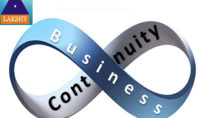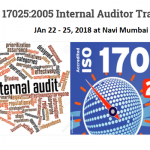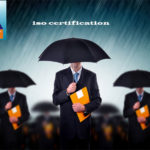Implementing Integrated Management System
All organizations are under pressure to demonstrate management systems that satisfy various stakeholder demands. Quality, environmental, IT security and health and safety concerns are just some of the requirements a business has to comply with today.
Traditionally, organizations have focused on establishing management systems that demonstrate compliance with each requirement individually, often in isolation from each other and sometimes even in conflict. In a perfect world, a business should have one system that runs the organization and addresses all the objectives at once, whatever they may be. Building an Integrated Management System to address various requirements enables a more streamlined flow of information throughout the business.
An integrated management system (IMS) assimilates all relevant components of a business into one coherent system so as to enable the optimal achievement of its business objectives. The purpose of Organization’s integrated Management System is to ensure product and service quality continue to meet the highest standards demanded by the organization and expected by its customers. It incorporates all of an organization’s systems and processes in to one complete framework, enabling an organization to work as a single unit with unified objectives. With an integrated system, an organization becomes a unified whole, with each function aligned behind a single goal: improving the performance of the entire organization. An integrated system provides a clear, holistic picture of all aspects of an organization, how they affect each other, and their associated risks. IMS allows a management team to create one structure that can help to effectively and efficiently deliver an organization’s objectives. From managing employees’ needs, to monitoring competitors’ activities, from encouraging best practice to minimizing risks and maximizing resources, an integrated approach can help an organization achieve their objectives.
Integrated Management is relevant to any organization, regardless of size or sector, looking to integrate two or more of their management systems into one cohesive system with a holistic set of documentation, policies, procedures and processes. All systems relevant to the business, whether certifiable or otherwise, can be included. These could include: Quality (ISO 9001); Environment (ISO 14001); Occupational Health & Safety (OHSAS 18001); Food Safety & Hazard Analysis Critical Control Points (ISO 22000 & HACCP); Social Accounting (SA 8000) and more.
While developing the IMS, it is ensured that it meets the requirements of the relevant ISO 9001, ISO 14001, OHSAS 18001, ISO 22000 and ISO 27001 specifications to demonstrate conformity to stake holders. Typically, organizations most receptive to this product will be those who have maturing management systems and who wish to introduce other management systems to their organization with the benefits that those bring. An effective integrated management system should ensure:
• Risk Assessment- this should address customer perceptions, health & safety risks, environmental concerns & impacts and process failure modes. By having a common approach it will be easier to compare risks occurring in different parts of the business.
• Norms & Regulations Management – to capture norms and regulations with respect to product specifications, environment and health & safety and their impacts on the business.
• Continual Improvement Management – this should focus on specific improvement programmes related to quality, health & safety and environment.
• Stakeholders Awareness – this should address needs of customers, staff and general public with respect to quality, health & safety and environment.
Accordingly all kinds of organizations have started pursuing the approach towards development and maintenance of unified management systems to address concurrently the confronting quality, production, marketing, environment, health & safety, food safety and information security issues. Thus, a typical IMS takes into account the specific organizational needs and accordingly the IMS structure is defined. Such a system results in a number of organizational benefits and optimal utilization of its human, financial & technical resources in an objective manner.
If you would like to learn more, contact us at info@lakshy.com or visit www.lakshy.com or call our 24 hours customer care +91 9821780035 to get your organization IMS certified.








